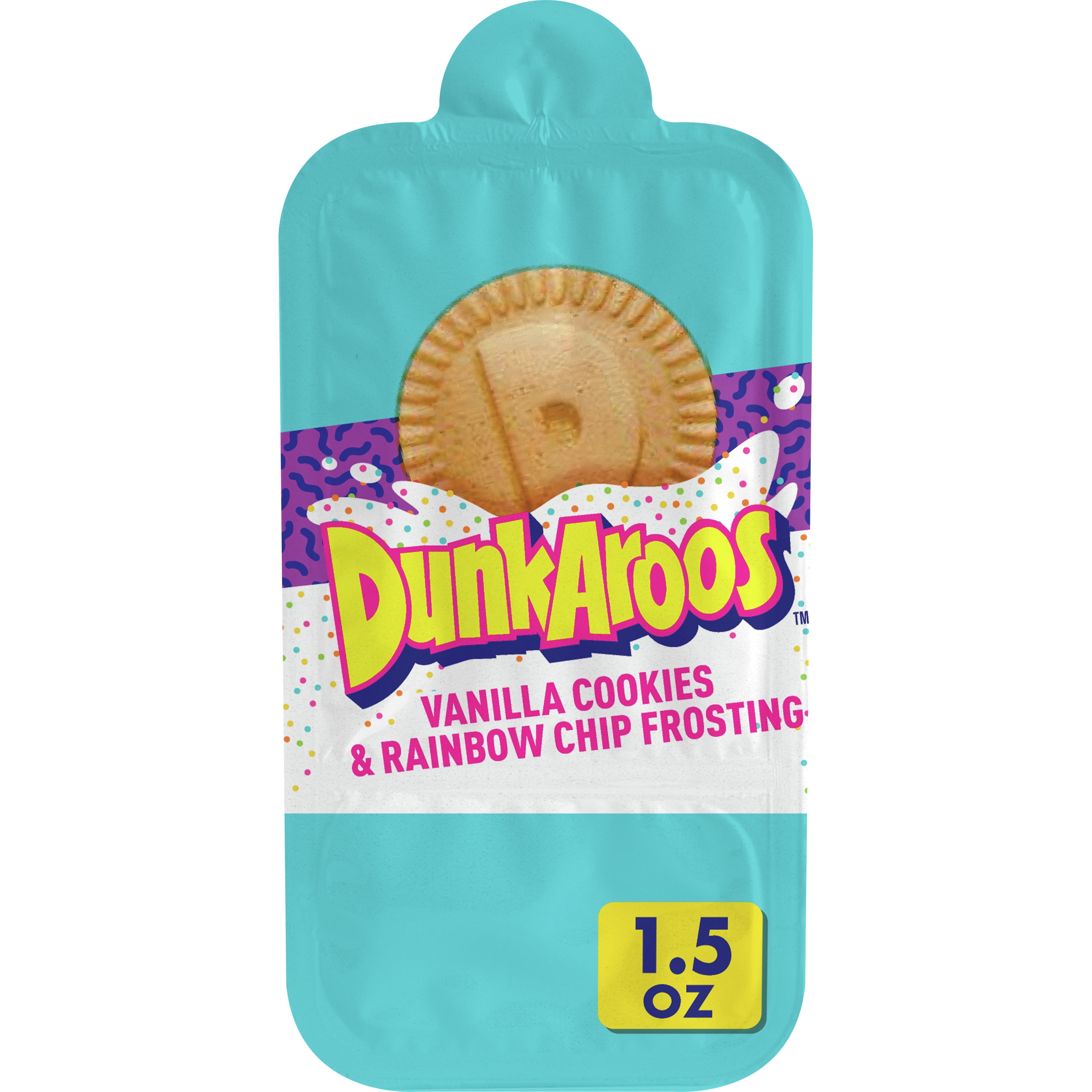Is Dunkaroos Vanilla Cookies and Vanilla Frosting, Rainbow Sprinkles, 1.5 oz Alpha-Gal?

Description
Mini vanilla cookies offer a crisp, slightly sweet bite paired with creamy vanilla frosting speckled with rainbow sprinkles. Texture contrasts between crunchy cookies and smooth frosting. Commonly consumed as a handheld snack for kids, lunchboxes, or on-the-go treats; reviewers often note nostalgic appeal, portability, and occasional commentary on frosting-to-cookie ratio.

Description
Mini vanilla cookies offer a crisp, slightly sweet bite paired with creamy vanilla frosting speckled with rainbow sprinkles. Texture contrasts between crunchy cookies and smooth frosting. Commonly consumed as a handheld snack for kids, lunchboxes, or on-the-go treats; reviewers often note nostalgic appeal, portability, and occasional commentary on frosting-to-cookie ratio.
Ingredients
Vanilla Frosting with Rainbow Chips: Sugar, High Fructose Corn Syrup, Vegetable Oil (palm, palm kernel oil, hydrogenated palm oil), Corn Starch, Water, Nonfat Dry Milk, Salt, Monoglycerides, Polysorbate 60, Sodium Stearoyl Lactylate, Sodium Acid Pyrophosphate, Soy Lecithin, Natural And Artificial Flavor, Color (yellow 5, red 40 lake, blue 2 lake, yellow 5 lake, yellow 6 lake, blue 1 lake, yellow 6) Citric Acid. Freshness preserved by Potassium Sorbate. Vanilla Cookies: Enriched Flour (wheat flour, niacin, reduced iron, thiamin mononitrate, riboflavin, folic acid), Powdered Sugar, Palm Oil, Water, Whole Wheat Flour, Salt, Soy Lecithin, Monocalcium Phosphate, Baking Soda, Natural And Artificial Flavor.
What is a Alpha-Gal diet?
An Alpha-Gal diet eliminates mammalian meat and products containing mammalian-derived ingredients to prevent allergic reactions in people with alpha-gal syndrome. This includes beef, pork, lamb, dairy products, gelatin, and certain medications derived from mammals. The condition involves a specific sugar molecule found in most mammals, often triggered after a tick bite. People may experience delayed allergic reactions 3-6 hours after consuming trigger foods. The diet focuses on safe alternatives like poultry, fish, and plant-based proteins. When followed carefully, often with guidance from an allergist or dietitian, it can prevent serious reactions while maintaining adequate nutrition.


